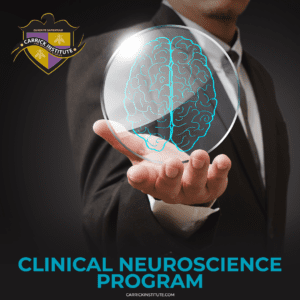Overview:

In embryology and physiology of the nervous system, you will learn the pertinent anatomy, physiology, and pathophysiology of the neuron as well the embryological development of the nervous system. You will learn techniques to allow you to appropriately assess and diagnose the common conditions related to embryological development and neuronal stability. Clinical applications will be discussed for patients with these conditions. This course provides the foundational framework for the use of manual and brain-based therapies in the treatment of neurological diseases.
Human movement is critical for survival. In this module we discuss the building blocks of the neuromuscular system by reviewing in detail muscular development and structure. We further discuss how muscles communicate with the CNS to provide a steady state of feedback allowing for fluid movement control. The most common primary myopathies and will be reviewed along with the most common neuromuscular disorders.
This exciting module begins by focusing on the concepts in embryological development of the peripheral and central nervous systems. Emphasis will be placed on discussing the pros and cons of both the columnar and prosomeric models of cortical organization. Physiological function of nerves will be reviewed with an emphasis on the clinical scenarios seen with metabolic deregulation. The influence of early sensory input to the development of thalamo cortical projections preserved throughout adulthood will be discussed in relationship to the effects of sensory deprivation on neurological integrity through out life. This module provides learners with the foundation needed for ongoing studies in our Clinical Neuroscience series. In this module you will also learn pertinent anatomy, physiology, and pathophysiology as related to the neuromuscular system. You will learn the appropriate assessments as well as the information needed to make an appropriate diagnosis for the most common conditions related to the function of the neuromuscular system. A neurological and physical medicine approach to supporting patients with these conditions will be presented.
 In embryology and physiology of the nervous system, you will learn the pertinent anatomy, physiology, and pathophysiology of the neuron as well the embryological development of the nervous system. You will learn techniques to allow you to appropriately assess and diagnose the common conditions related to embryological development and neuronal stability. Clinical applications will be discussed for patients with these conditions. This course provides the foundational framework for the use of manual and brain-based therapies in the treatment of neurological diseases.
Human movement is critical for survival. In this module we discuss the building blocks of the neuromuscular system by reviewing in detail muscular development and structure. We further discuss how muscles communicate with the CNS to provide a steady state of feedback allowing for fluid movement control. The most common primary myopathies and will be reviewed along with the most common neuromuscular disorders.
This exciting module begins by focusing on the concepts in embryological development of the peripheral and central nervous systems. Emphasis will be placed on discussing the pros and cons of both the columnar and prosomeric models of cortical organization. Physiological function of nerves will be reviewed with an emphasis on the clinical scenarios seen with metabolic deregulation. The influence of early sensory input to the development of thalamo cortical projections preserved throughout adulthood will be discussed in relationship to the effects of sensory deprivation on neurological integrity through out life. This module provides learners with the foundation needed for ongoing studies in our Clinical Neuroscience series. In this module you will also learn pertinent anatomy, physiology, and pathophysiology as related to the neuromuscular system. You will learn the appropriate assessments as well as the information needed to make an appropriate diagnosis for the most common conditions related to the function of the neuromuscular system. A neurological and physical medicine approach to supporting patients with these conditions will be presented.
In embryology and physiology of the nervous system, you will learn the pertinent anatomy, physiology, and pathophysiology of the neuron as well the embryological development of the nervous system. You will learn techniques to allow you to appropriately assess and diagnose the common conditions related to embryological development and neuronal stability. Clinical applications will be discussed for patients with these conditions. This course provides the foundational framework for the use of manual and brain-based therapies in the treatment of neurological diseases.
Human movement is critical for survival. In this module we discuss the building blocks of the neuromuscular system by reviewing in detail muscular development and structure. We further discuss how muscles communicate with the CNS to provide a steady state of feedback allowing for fluid movement control. The most common primary myopathies and will be reviewed along with the most common neuromuscular disorders.
This exciting module begins by focusing on the concepts in embryological development of the peripheral and central nervous systems. Emphasis will be placed on discussing the pros and cons of both the columnar and prosomeric models of cortical organization. Physiological function of nerves will be reviewed with an emphasis on the clinical scenarios seen with metabolic deregulation. The influence of early sensory input to the development of thalamo cortical projections preserved throughout adulthood will be discussed in relationship to the effects of sensory deprivation on neurological integrity through out life. This module provides learners with the foundation needed for ongoing studies in our Clinical Neuroscience series. In this module you will also learn pertinent anatomy, physiology, and pathophysiology as related to the neuromuscular system. You will learn the appropriate assessments as well as the information needed to make an appropriate diagnosis for the most common conditions related to the function of the neuromuscular system. A neurological and physical medicine approach to supporting patients with these conditions will be presented. 



